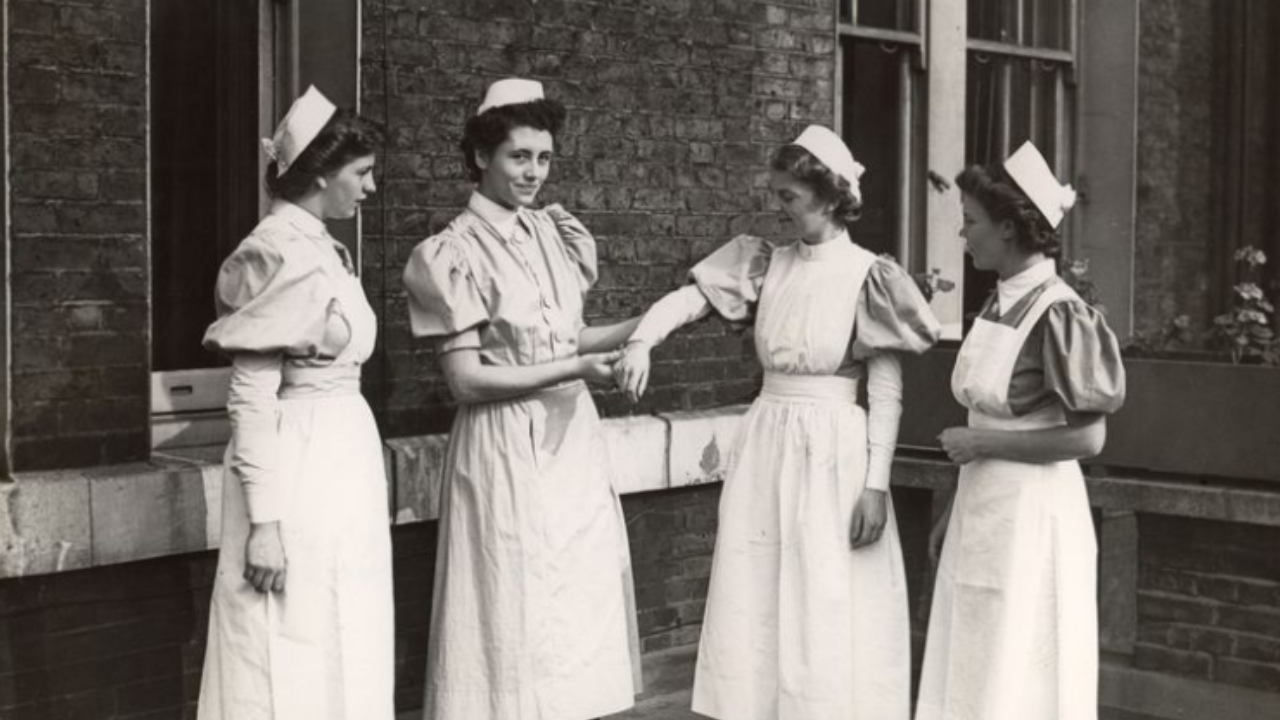The history behind nursing uniforms is much more than that of the uniform; it is that of a changing professional standard, cultural shift, and changes or modifications in health care practices. With the very sober nuns at the beginning of the 20th century and the uniforms that have changed a great deal thereafter, nursing uniforms have had quite the evolution. This paper looks into this evolution of the nursing uniform over the decades, pointing out materials, design, and influences in their development.
Early 1900s: The Nun’s Habit
At the turn of the 20th century, the nursing uniform more so reflected the attire of a nun’s habit which was symbolic of the disciplined and selfless nature associated with the caring profession. With its long skirts, the habit provided full-length and complete coverage.
Key Features
- Fabric: Heavy, starched cotton or linen.
- Design: Full-length skirt, apron, co.
- Symbolism: Religious and military influences; focus on purity and service.
Post-World War II: The Skirts Get Shorter
It was after the Second World War that the nursing uniform began to follow practical fashion in both style and design. Traditional full-length uniforms started giving way to shorter skirts, reflecting changes in the larger society. This movement was not only for reasons of practicality but also for purposes of adaptation to the new role that a nurse had in this fast-changing world.
Main Features
- Material: Less rigid, more pliable fabrics.
- Knee-length or mid-calf skirts.
- Impact: Improved mobility and comfort; adheres to the theme of postwar society.
1960s and 1970s: The Age
It was the great decade of social change, and women wearing pantsuits reflected it all. The old traditional, skirted uniforms went by the wayside and in came modern functional uses of the pant suits. Nursing professionals began to wear this pantsuit because they felt professional equality and practicality were being stressed.
Key Features
- Material: Manmade fibers, mainly polyester and its blends, are easily laundered and quick-drying.
- Redesign: As skirts, pantsuits with the exact same color as the top, and pants are being exchanged.
- Effects: More mobility and professional look according to the gender-equality movements.
1990s: The Advent of the Medical Asceticism
The 1990s heralded changes in the era of nursing uniforms, with the full-blown utilization of surgical scrubs. It had been urged by the needs of hygiene, infection prevention, and practicality. Whereas just operating room uniforms in previous days were surgical scrubs, soon, this emblematic change would include every health setting.
Key Features
- Material: Lightweight and breathable materials, such as a poly/cotton blend, with easy-care properties.
- Design: Unisex, short-sleeved tops with drawstring pants.
- Impact: Improved infection control, improved maintenance, and standardization at healthcare facilities.
Modern Times: The Era of Smart and Practical Uniforms
Today’s nursing uniforms come in every shade of color and pattern you can imagine. The rationale for the switchover from white uniform to scrubs of color was patient-centered and aimed at enhancing nurse-patient experiences. Modern-day scrubs are composed of advanced materials making them totally comfortable and functional.
Key Functionalities
- Material: Moisture-wicking high-end stretchy fabric.
- Design: Any color or pattern available from fun prints to customization with your graphics.
- Effects: Improved comfort, morale, and the way patients interact; includes several pockets and reinforced stitch points.
Origin of Sneaker: A Study from the Oxfords to the Modern Athletic
Evolution in nursing uniforms goes right down to the wearing of shoes. Traditional nurses used to put on oxfords, which were nice but not all the time comfortable during long shifts. Today, athletic footwear is the norm, offering superlative support and comfort for the demanding job of nursing.
Key Features
- Traditional Shoes: Dress oxford leather shoes.
- Contemporary Footwear: Athletic shoes with breathable and supportive uppers and cushioned soles.
- Impact: Improved comfort and support; reduced fatigue associated with long hours.
Conclusion
The evolution of nursing uniforms tells a compelling story of adaptation and progress. Each phase in the history of nursing attire not only reflects changing professional needs but also broader societal trends. From the traditional nun’s habit to today’s colorful and functional scrubs, nursing uniforms have continually adapted to meet the demands of healthcare professionals and enhance patient experiences. This ongoing transformation underscores the commitment to improving both the practical and symbolic aspects of nursing attire, ensuring it remains in harmony with the evolving nature of this vital profession.


